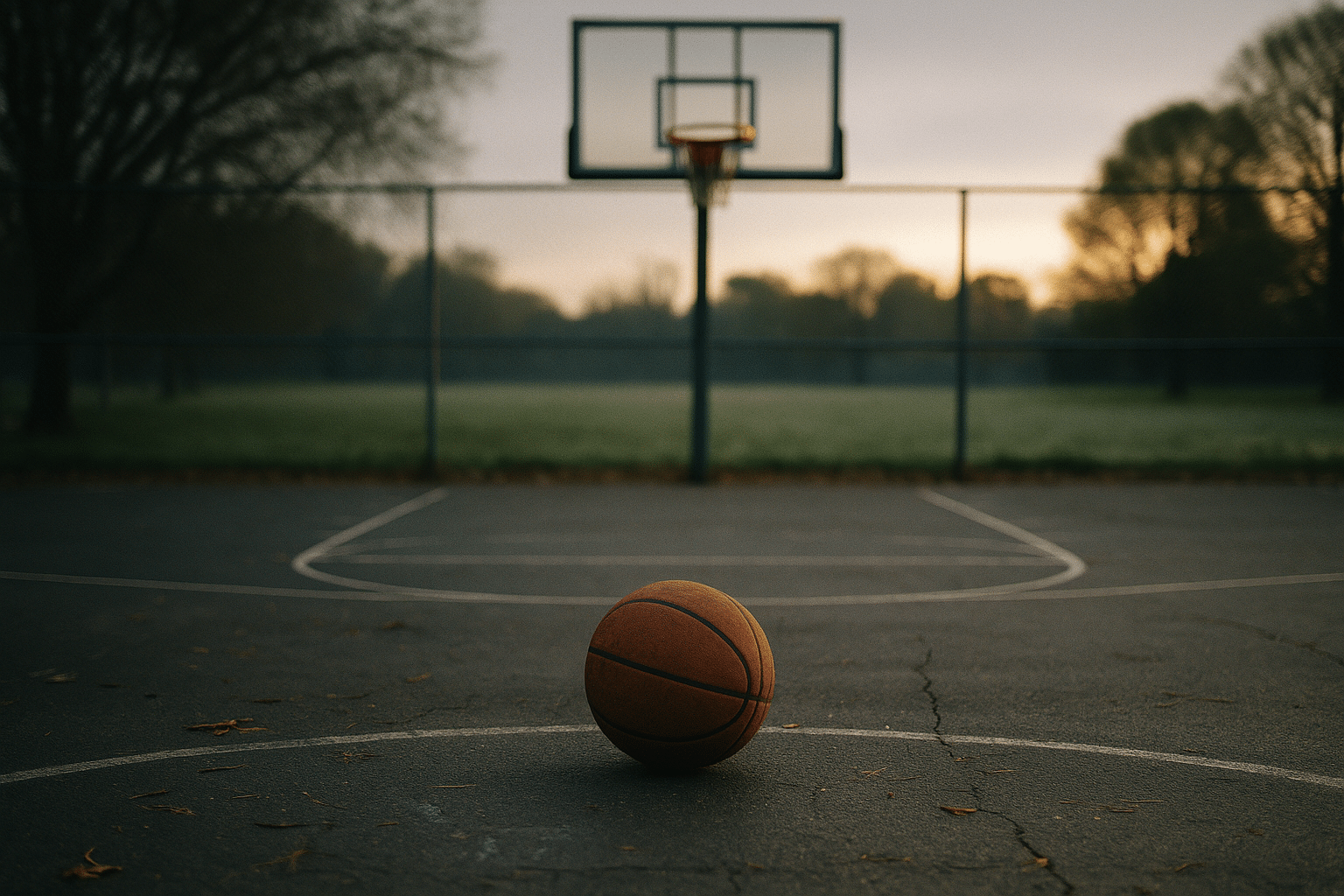
Exploring Basketball: Basketball innovations and news.
Outline
– Why basketball’s constant innovation matters for players, coaches, and fans
– Evolution of rules, pace, and positions—and what they mean today
– Technology in training and performance: data, sensors, and smarter practice
– Equipment and environment: from balls and backboards to sustainable courts
– Global growth and community impact, including inclusive formats
– Strategy trends and analytics: spacing, pace, and efficient shot selection
Introduction
Basketball breathes through hardwood echoes and asphalt scuffs, equally at home under bright arena lamps and quiet park lights. Its relevance stretches beyond the box score: it is a classroom for teamwork, a laboratory for human performance, and a stage for design and engineering breakthroughs. Innovations—whether a subtle rule tweak or a leap in training technology—reshape how the game is taught, played, and enjoyed. For learners, coaches, and enthusiasts, keeping an eye on these developments is not trivia; it is a way to understand where the sport has been and where it is going.
From Peach Baskets to Positionless Play: How the Game Evolved
Basketball began as a simple indoor activity designed to channel energy and cooperation. Over time, refinements turned a casual pastime into a global sport with codified rules, standardized dimensions, and a recognizable rhythm. The rim stands at 10 feet, demanding a blend of verticality and touch. A full court at many levels spans roughly 28 by 15 meters (or about 94 by 50 feet), dimensions that favor a swift ball, decisive cuts, and coordinated spacing.
Rule changes across eras have shaped the sport’s identity. The introduction of time constraints on possessions accelerated the pace, encouraging assertive offense and attentive defense. The value of long-range shots altered spacing: with an extra reward for distance, players learned to stretch the floor, while defenders learned to rotate faster and close out smarter. The cumulative effect: a game that rewards creativity and quick reads as much as height and strength.
While early basketball often emphasized fixed roles—tall players near the rim and smaller players handling the ball—modern play moves toward fluid, “positionless” systems. Forwards initiate offense; guards post up; centers launch outlets and handoffs from the top of the arc. This evolution mirrors broader trends in athletic training: agility is cultivated for every body type, and decision-making is taught across the entire lineup. In many top competitive environments, the average number of three-point attempts per team has steadily risen over the past decade, commonly reaching 35–45% of total field goal attempts. That shift forces tactical responses, such as switching defenses, zone-matchups, and hybrid coverages designed to protect the paint without surrendering the perimeter.
Experiments continue at various levels—variations on replay use, late-game timing adjustments, or technical penalty structures—to balance fairness, flow, and drama. These trials do not merely entertain. They teach policymakers and coaches how the smallest change—a reset to the shot clock here, an adjustment to bonus free throw rules there—can cascade into new offensive patterns, different substitution strategies, and a renewed focus on decision-quality under pressure.
– Then vs. now: Early game prized height near the rim; modern play prizes versatility across the floor.
– Tactical ripple: Extra value for distance increases spacing; defense answers with switches and smarter help.
– Ongoing updates: Timing, replay, and foul frameworks evolve to keep the game fluid and competitive.
Smarter Practice: Sensors, Tracking, and the Rise of Data-Informed Training
Today’s training spaces are part gym, part research lab. Wearable sensors, optical tracking systems, and video analytics feed coaches with quantitative insights once limited to elite research centers. Accelerometers and gyroscopes can sample movements dozens to hundreds of times per second, estimating jump loads, deceleration forces, and changes of direction. Heart-rate and variability measures inform conditioning and recovery windows. Combined, these inputs help tailor programs to the individual athlete rather than a generic template.
On the court, optical tracking maps every cut and screen. Coaches can evaluate how spacing evolves within a possession, identify hesitation points, and quantify shot quality instead of judging solely by makes and misses. In the weight room, force plates and bar-speed sensors show how power transfers from the ground up—useful when a player seeks measurable gains in first-step explosiveness or late-game stamina.
Data does not replace coaching intuition; it sharpens it. The art remains in interpreting the signal. Two players might generate similar acceleration peaks, yet one fatigues faster laterally while the other struggles vertically. Smart staff align the numbers with player feedback, video review, and context like travel, sleep quality, or academic/workload demands. This holistic approach respects the human behind the numbers.
Key applications coaches are adopting include:
– Load management: Distributing high-intensity drills to prevent overuse without losing competitive edge.
– Shot-quality models: Scoring chances based on defender distance, pass type, and shooter momentum rather than outcome alone.
– Skill acquisition: Using constraints-led drills (smaller-sided games, altered spacing) to accelerate decision-making under pressure.
– Recovery science: Structuring microcycles—mobility, light cardiovascular work, and progressive reintroduction of intensity—after heavy matches or travel.
Privacy and data ethics matter. Teams increasingly define boundaries on what is collected, who sees it, and how long it is stored. Transparent protocols build trust: athletes who understand the “why” behind tracking are more likely to engage. Finally, access is broadening. Community programs and schools now implement simplified tools—phone-based video, low-cost sensors—to capture enough data for meaningful feedback without expensive systems. The result is a more informed player pathway, from local gyms to elite arenas.
Materials and Environments: Balls, Backboards, and Sustainable Courts
A game’s feel is shaped by what you touch and where you play. The ball’s cover, channel depth, and internal bladder affect grip, bounce consistency, and shooting confidence. Composite covers offer a soft, tacky feel that performs well indoors, while durable rubber designs tolerate outdoor abrasion. The small bumps—pebbled texture—enhance friction, especially when hands get sweaty, and deeper channels can guide finger placement without forcing it. Air pressure matters too; shooting, dribbling, and rebounding rhythms are more predictable when a ball is consistently inflated to the recommended range.
Backboards and rims refine the game’s geometry. Tempered glass, often 10–12 mm thick at higher levels, provides a true rebound and clear visibility for bank shots and weak-side decisions. Uniform rim elasticity reduces the “lottery effect” on makes and misses: soft enough to reward touch, firm enough to discourage reliance on friendly bounces. Nets influence sound and feedback—nylon for a crisp swish, chain for outdoor durability and a satisfying metallic ring. These choices, while subtle, accumulate into a court personality that players quickly learn to read.
Underfoot, surfaces matter for both performance and joint health. Traditional hardwood, commonly a resilient maple, offers a lively response with controlled shock absorption. Sports flooring standards often target force reduction in the ballpark of 40–60%, easing repetitive impact without turning the surface into a trampoline. Modular outdoor tiles resist weather and provide drainage, while asphalt and concrete, though widely available, can be unforgiving on ankles and knees over long sessions.
Environmental stewardship is reshaping facility decisions. Recycled rubber layers and bio-based adhesives are entering the conversation, aiming to reduce volatile emissions and extend lifecycle durability. Some communities refurbish courts with permeable bases to manage stormwater and heat, pairing function with urban cooling benefits. Lighting upgrades toward energy-efficient, shielded fixtures (where permitted) limit glare and light spill, improving playability and neighborhood relations.
– Indoor vs. outdoor: Indoor hardwood favors precision footwork; outdoor surfaces favor durability and community access.
– Material signals: Pebbled texture and channel depth guide touch; tempered glass and standardized rim response build predictability.
– Sustainability: Recycled underlayment, low-emission finishes, and climate-conscious site design support long-term community health.
Global Growth, Grassroots Energy, and Inclusive Pathways
Basketball’s simple recipe—ball, hoop, and a rectangle of possibility—helps it spread across borders and budgets. Public parks, school gyms, and community centers provide low-barrier spaces where newcomers can learn fundamentals and veterans can sustain lifelong habits. Local tournaments and weekend leagues energize neighborhoods, bringing small businesses foot traffic and families together around a shared schedule.
Youth participation remains a cornerstone. Skills clinics frequently blend athletic technique with lessons in communication and resilience. In many regions, coaches now integrate athlete well-being into planning, emphasizing appropriate training age, rest, and multi-sport sampling to minimize early specialization drawbacks. That approach surrounds the athlete with support and reduces dropout rates by centering enjoyment and progress over early results.
Small-sided formats such as half-court, three-on-three play have grown quickly because they compress the game’s essence into short, intense possessions. Fewer players mean more touches, rapid decision cycles, and condensed strategy—valuable for both development and recreational fun. Street-court cultures add style and improvisation, reminding us that creativity is not a luxury; it is the sport’s engine.
Inclusivity is more than a slogan. Adaptive basketball, including wheelchair formats, celebrates skill expression through different equipment and tactics. Mixed-ability sessions, where feasible, encourage empathy and teamwork. Women’s and girls’ basketball continues to thrive, with improved visibility feeding better coaching resources and stronger competition pathways. Many organizations also blend academic support with sport, recognizing that the drive to excel on court can carry over to classroom persistence.
Community-driven success tends to follow a few habits:
– Accessibility: Safe facilities, transparent participation costs, and welcoming coaching.
– Continuity: Programs that serve ages from early childhood to adult recreation.
– Partnerships: Collaboration among schools, health providers, and local businesses.
– Celebration: Regular showcases and festivals that recognize effort, not only trophies.
As the sport expands, the stories multiply: refurbished courts turning into civic landmarks, weekend tournaments evolving into regional traditions, and alumni returning to mentor. Basketball’s global footprint grows one neighborhood at a time, with every bounce a thread in a larger community fabric.
Strategy and Analytics: Spacing, Pace, and the Geometry of Shot Value
Contemporary strategy revolves around earning high-quality attempts while denying them to opponents. The language is familiar—spacing, pace, advantage creation—but the tools to measure it are sharper than ever. Coaches evaluate expected points per shot rather than purely field goal percentage. At many levels, a well-generated three-pointer converts around 35–40%, translating to roughly 1.05–1.20 expected points. At the rim, finishing rates often sit near 60–70%, or about 1.20–1.40 expected points. Mid-range looks, while necessary in certain late-clock or coverage scenarios, can hover around 40–45% for 0.80–0.90 expected points unless taken by specialists or generated from clear advantages.
This arithmetic turns into geometry. The corners become prized real estate due to shorter distance and friendly angles; the paint remains the most contested neighborhood in sports. Teams build “two-on-the-ball” scenarios with drives, handoffs, and screen-the-screener actions, hunting brief windows where help defense overcommits. When defenders switch, offenses retaliate with slips, ghost screens, and quick inversions. The goal is simple: get to the rim, the line, or a rhythm three. Everything else is plan B or plan C—still valuable, but carefully chosen.
Defensively, the pendulum swings toward versatility. Length on the perimeter disrupts passing angles and complicates skip reads. Rotational discipline matters as much as individual talent: a late low man or slow X-out can turn a well-guarded possession into a corner three. Some systems show the ball to a crowded paint, then scramble back to shooters; others force mid-range pull-ups by design. The selection depends on personnel, opponent tendencies, and fatigue.
Analytics at the team level often include:
– Shot charts weighted by expected value, not just frequency.
– Lineup synergy metrics quantifying on-court creation and containment.
– Tempo bands that align substitution patterns with energy dips and opponent pace.
– Scouting models that prioritize “first action disruption” vs. “late-clock discipline.”
Importantly, numbers inform but do not dictate. A player’s comfort zone and confidence can swing outcomes beyond spreadsheets. Coaches blend data with film and dialogue, teaching counters that survive the playoff-style tightening seen in high-stakes games. In youth and amateur settings, simplified analytics still help: emphasizing extra pass rates, paint touches per possession, and transition defense accountability. When the final buzzer sounds, strategy and analytics converge on one outcome: better decisions, more consistently executed, by athletes who understand both the why and the how.
Conclusion
Basketball’s heartbeat is innovation balanced by fundamentals. Whether you are a player refining footwork, a coach designing practices, or a fan curious about how tactics and technology intersect, the sport offers a steady stream of useful ideas. Embrace the data without losing the human story; invest in better environments while keeping the court welcoming; chase smarter shots while honoring the mid-range when the game demands it. The next chapter is being written in community centers, school gyms, and professional arenas alike—everywhere the ball finds hands ready to learn, adapt, and create.


